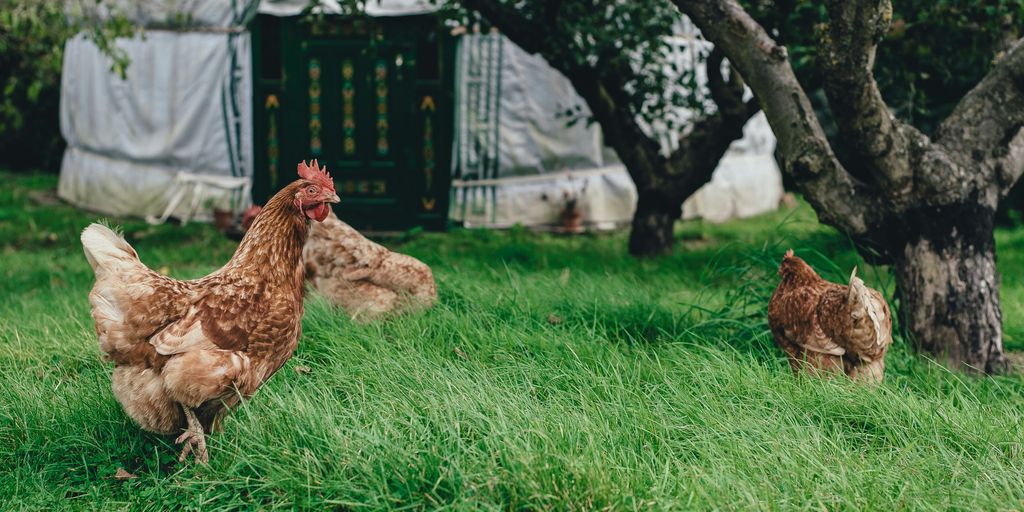Understanding the Difference Between Yurt and Tepee: A Comprehensive Guide
Yurts and tipis are two unique types of shelters with rich histories and distinct features. Both have been used for centuries by different cultures around the world. This guide will help you understand the key differences between these fascinating structures, from their historical backgrounds to their modern-day uses.
Key Takeaways
- Yurts originated in Central Asia, while tipis have roots in Native American culture.
- Yurts are circular and made with a wooden frame, while tipis are conical and use long poles.
- Yurts provide better insulation and are more suitable for year-round living compared to tipis.
- Tipis are generally easier to set up and more affordable than yurts.
- Both yurts and tipis have significant cultural importance and are used worldwide today.
Historical Background of Yurts and Tipis
Origins of Yurts in Central Asia
Yurts have a rich history, originally used by nomadic people across the vast Eurasian Steppe, which stretches from Hungary to China. These structures have been around for up to three thousand years and are known by various names in different cultures. For instance, in Mongolia, they are called gers, while in Russia, they are referred to as yurtas.
Native American Roots of Tipis
Unlike yurts, tipis are a distinctly North American phenomenon. They have always been an integral part of Native American culture and did not need to be introduced to the North American market. Modern tipis, often made with contemporary materials like sailcloth, have been available for purchase since at least 1976.
Evolution Over Time
Both the Mongolian ger and the North American tipi are testaments to human ingenuity and adaptability. Over the centuries, these structures have evolved but still retain their core designs. They offer valuable insights into the lifestyles and needs of the people who built them.
Structural Differences Between Yurts and Tipis
When it comes to the structural differences between yurts and tipis, there are several key aspects to consider. Let’s dive into the details.
Framework and Materials
Yurts are famous for their unique circular structure, which is supported by a wooden frame and covered with felt or canvas. This design provides a sturdy and weather-resistant shelter. On the other hand, tipis are constructed using a series of long poles arranged in a conical shape, with a canvas or animal hide covering. The simplicity of the tipi’s framework makes it easier to set up but less robust in severe weather conditions.
Shape and Design
The shape of yurts is distinctively round, which helps in distributing stress evenly across the structure. This circular design also maximises interior space, making it more comfortable for long-term living. Tipis, with their conical shape, are designed to withstand strong winds by allowing them to flow around the structure. However, this shape can limit the usable interior space compared to a yurt.
Weather Resistance
Yurts are designed to withstand various weather conditions, making them suitable for year-round living. They offer better insulation and weather resistance compared to tipis. Tipis, while charming and functional, may not provide the same level of protection against harsh weather, especially during heavy rains or snow.
Living Experience: Yurts vs. Tipis

When it comes to living in a yurt or a tipi, both offer unique experiences that cater to different needs and preferences. Let’s dive into the specifics to help you understand what each has to offer.
Comfort and Space
Maximising space in your yurt can transform your living experience, making it more comfortable and functional. Yurts generally offer more interior space and can be customised with modern amenities. Tipis, on the other hand, have a more compact and cosy feel, which can be quite charming but may not offer the same level of comfort.
Ease of Setup
Setting up a yurt can be a bit more involved due to its intricate structure, but once it’s up, it provides a sturdy and reliable living space. Tipis are relatively easier to set up, often requiring just a few poles and a wrap. This makes them ideal for those who need a quick and temporary shelter.
Seasonal Suitability
Yurts are designed to withstand various weather conditions, making them suitable for year-round living. They offer better insulation and weather resistance compared to tipis. Tipis, while charming and functional, may not provide the same level of protection against harsh weather, especially during heavy rains or snow.
In summary, if you’re looking for a more permanent and comfortable living solution, a yurt might be the better choice. However, if you need something quick and easy to set up, a tipi could be the way to go.
Cultural Significance of Yurts and Tipis
Cultural Importance of Yurts
Yurts have come a long way from their origins in Central Asia. Today, they are celebrated for their unique charm and ability to bring people closer to nature. These structures are not just homes but symbols of a simpler, more connected way of life. You can find yurts being used as full-time residences, holiday retreats, and even as unique venues for events.
Cultural Importance of Tipis
Tipis hold a special place in the hearts of many Native American tribes. They are more than just shelters; they are a vital part of cultural heritage. Modern tipis, often made with contemporary materials, continue to be used for various purposes, from weekend getaways to backyard play areas. The tipi’s design has stood the test of time, proving its functional and aesthetic qualities.
Modern-Day Usage
Both yurts and tipis have gained global recognition. People around the world appreciate their distinctive and enriching experience. Whether it’s a yurt in a European countryside or a tipi in an Australian outback, these structures offer a unique way to connect with nature and history.
Environmental Impact of Yurts and Tipis
Sustainability of Materials
Yurts are often made from natural materials, which means their environmental impact is quite low. The round shape of a yurt maximises the interior space relative to the amount of building materials used. This efficient use of resources is a significant advantage. On the other hand, tipis are also made from natural materials, but they often require more frequent replacement of components like the outer canvas, which can add to their environmental footprint.
Energy Efficiency
When it comes to energy efficiency, yurts have a slight edge. Their circular design helps in maintaining a consistent temperature, making them easier to heat in the winter and cool in the summer. Proper insulation is crucial, especially in areas with harsh winters or extreme weather conditions. Tipis, while also efficient, may not offer the same level of insulation, making them less ideal for extreme climates.
Eco-Friendly Living
Both yurts and tipis offer a way to live closer to nature, but yurts might have a slight advantage in terms of long-term sustainability. Their sturdy construction and efficient use of materials make them a more durable option. Tipis, while culturally significant and aesthetically pleasing, may require more frequent maintenance and material replacement, which can impact their overall eco-friendliness.
Living full-time in a yurt can be a journey back to simplicity, offering a unique blend of comfort and sustainability.
Cost Comparison: Yurts vs. Tipis
When it comes to cost, there are some notable differences between yurts and tipis. Let’s break it down into three main areas: initial purchase costs, maintenance costs, and long-term value.
Initial Purchase Costs
The initial cost of a yurt is generally higher than that of a tipi. For example, a standard 24-foot yurt package can cost around $8,295, whereas a basic tipi of the same size might set you back approximately $2,483. The price difference becomes even more pronounced with smaller sizes. A 16-foot tipi can cost about $1,072, while a yurt of the same size could be around $5,915. Tipis are often a more budget-friendly option upfront.
Maintenance Costs
Maintenance costs can also vary between the two. Tipis, being simpler structures, generally require less upkeep. However, they may need more frequent repairs due to their less weather-tight design. Yurts, on the other hand, are more intricate and may have higher maintenance costs but offer better weather resistance.
Long-Term Value
In terms of long-term investment, yurts might offer better value. Their sturdier construction and better weather resistance can make them more durable over time. While the initial cost is higher, the longevity and comfort of a yurt can make it a worthwhile investment in the long run.
Choosing Between a Yurt and a Tipi
When it comes to choosing between a yurt and a tipi, there are several factors to consider. Each structure has its own unique benefits and drawbacks, so it’s important to think about what you value most in your living space.
Personal Preferences
Your personal preferences play a significant role in this decision. If you prefer a more traditional and rustic feel, a tipi might be the way to go. On the other hand, if you want something that feels a bit more modern and spacious, a yurt could be a better fit.
Intended Use
Consider how you plan to use the structure. Are you looking for a permanent residence, a weekend getaway, or perhaps a unique accommodation unit for events? Tipis are often easier to set up and take down, making them ideal for temporary use. Yurts, with their sturdier construction, are better suited for long-term living.
Budget Considerations
Budget is another crucial factor. Generally, tipis are more affordable than yurts. Here’s a quick comparison:
| Structure | Approximate Cost (24′) |
|---|---|
| Yurt | $8,295 |
| Tipi | $2,483 |
Keep in mind that these prices can vary based on size and additional features. While the initial purchase price of a tipi is lower, you might find that a yurt offers better value in the long run due to its durability and comfort.
Ultimately, the choice between a yurt and a tipi comes down to what you need and what you can afford. Both options offer unique experiences and can be a wonderful addition to your lifestyle.
Deciding between a yurt and a tipi can be tricky. Yurts are round and sturdy, making them great for year-round living. Tipis, with their cone shape, are better for short stays. Want to learn more? Visit our website for detailed comparisons and tips!
Conclusion
In wrapping up, both yurts and tipis offer unique ways to enjoy the great outdoors and live a simpler life. Yurts are sturdy and well-suited for all seasons, making them great for longer stays. Tipis, on the other hand, are easier to set up and move, making them perfect for short trips or temporary use. Each has its own rich history and cultural importance, adding a special touch to your outdoor adventures. So, why not give both a try and see which one fits your needs best? Happy camping!
Frequently Asked Questions
What are the key differences between a yurt and a tipi?
The main differences lie in their structure, materials, and cultural origins. Yurts have a circular wooden frame covered with felt or canvas, while tipis are conical and made of wooden poles covered with animal skins or canvas.
Which is more costly, a yurt or a tipi?
Yurts generally cost more than tipis. For example, a 24-foot yurt can cost around £6,500, whereas a similar-sized tipi might be about £2,000.
Can yurts and tipis be used all year round?
Yurts are usually better for all seasons due to their superior weather resistance and insulation. Tipis can be used year-round but may need extra modifications for extreme weather.
What is the historical importance of yurts and tipis?
Yurts have a long history in Central Asia, used by nomadic tribes. Tipis are deeply rooted in Native American culture and have been used by various tribes across North America.
How easy is it to set up a yurt compared to a tipi?
Tipis are generally easier and quicker to set up than yurts because of their simpler structure. However, both can be assembled with basic tools and some help.
Are yurts and tipis environmentally friendly?
Both yurts and tipis are environmentally friendly, but yurts might have a slight edge due to their durability and efficient use of materials.





